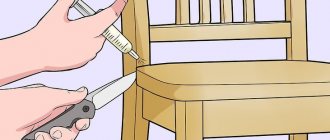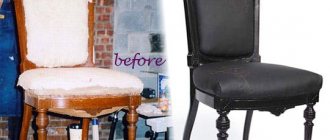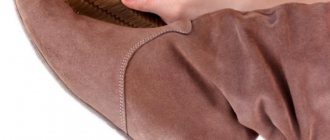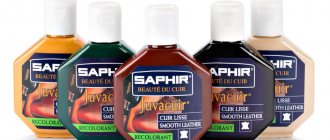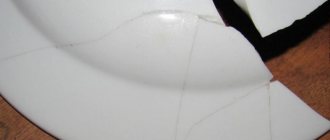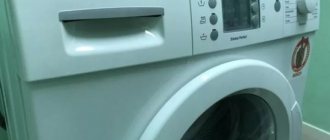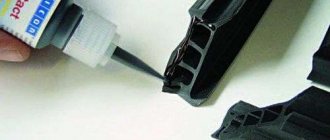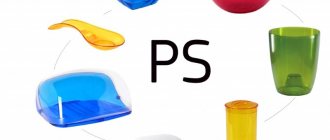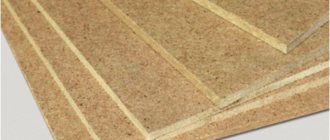| Place | Name | Characteristics in the rating |
| The best PVA glue |
| 1 | Kleiberit 303.0 | The most waterproof PVA glue |
| 2 | Krass PVA PVA D3 | The most transparent wood glue |
| 3 | Moment Joiner PVA Universal | The best domestic glue |
| The best polyurethane adhesives |
| 1 | Kleiberit 501.0 | The best all-purpose glue |
| 2 | SOUDAL 66A | Highest adhesion |
| 3 | Akfix PA370 D4 | Fast drying and excellent heat resistance |
| The best resin-based adhesives for wood |
| 1 | Titebond Original Wood Glue | The best professional glue |
| 2 | Uhu plus endfest 300 | The strongest glue |
| 3 | EDP epoxy glue | Best price |
| Modern synthetic based adhesives |
| 1 | Titebond III Ultimate Wood Glue 1415 | The most harmless glue |
| 2 | Quilosa Bunitex P-55 | Does not lose its properties over time |
| 3 | Forbo 650 Eurostar Fastcol | High fixation |
Application nuances
You should not only choose the adhesive solution wisely, but also have a good understanding of the basic rules for its use, these include:
- before using any solution, carefully study the instructions from the manufacturer, based on which you can determine what material such adhesive is suitable for, as well as how to work with it correctly;
- the composition is studied to ensure the absence of dangerous and toxic substances, since if they are present, then the material must be handled carefully, and it is also not suitable for furniture intended for the home;
- all actions must be carried out either outdoors or in a well-ventilated area, and protective clothing must be worn;
- All surfaces are well cleaned of dust or dirt before gluing. It's also worth making sure they are completely dry;
- most compositions are white or yellow in color, so if you have to work with multi-colored structures, it is recommended to choose a colorless composition;
- The glue should not be applied in a too thick layer, and spread it over the two surfaces to be glued, then carefully connect them and press them tightly together.
If two-component solutions are used, then the material is applied to one surface, and a hardener must be applied to the other, which ensures ideal bond strength. Thus, furniture adhesives come in a variety of forms. They differ in composition, basic characteristics and nuances of use. When choosing, you need to consider what material the interior items are made of. You cannot choose materials for your home that contain hazardous substances. When working with glue, safety precautions must be observed.
How to make wood glue with your own hands
Often a carpenter is needed on a farm. Cooking it yourself is not difficult. To prepare, you only need a tile of wood glue.
Before firing, the tile is broken, its fragments are placed in a prepared container and filled with cold water. Next, you need to wait until the tiles are saturated. This may take 10-11 hours.
After the formation of a jelly-like mass, the container is placed in a water bath, the contents must be constantly stirred. If thick glue is not needed, you need to add a little hot water to the container.
The mixture should not be brought to a boil. The contents are infused, stirring constantly until all lumps are completely dissolved. The absence of lumps indicates that the glue is ready for use.
When preparing the mixture, you can use different additives. They will improve the characteristics of the mixture and expand its scope of application. For example, adding linseed oil or drying oil to the composition can increase the water resistance of the glue.
Selection rules taking into account the furniture material
For any piece of furniture, it is advisable to separately select the optimal adhesive. Any composition has its own individual characteristics and parameters, so for a plastic structure it is advisable to choose a different solution than for a wooden one.
When choosing glue, the following rules are taken into account:
- if you need to work with fabric, foam rubber or leather, then PVA glue is usually chosen;
- the connection of wooden parts is usually carried out using joiner's compound;
- when working with veneer, hot melt adhesive is ideal;
- For manual veneering, animal glue is used, and to use it, you must first melt it in water.
The packaging of any adhesive indicates which surfaces it is ideally suited for, so it is advisable to follow these recommendations from the manufacturer.
In addition to studying the material for furniture production, other factors are additionally taken into account when choosing a mixture:
- the composition should not contain trichloroethane, which is hazardous to health;
- the color should match the color of the furniture;
- the density of the solution should not be less than 1.1 g/cm3;
- The optimal ones are those created on the basis of synthetic elastomers, which better glue different materials, and at the same time do not lead to their destruction in any way.
Thus, if you choose the glue wisely, there will be no problems or difficulties with its intended use.
The choice of glue depends on what material is to be glued
How to glue a wooden chair
Not all adhesives are used to hold wood elements together.
For furniture repair, substances are selected that meet the following requirements:
- water resistance;
- high adhesive properties - the factor contributes to the formation of a reliable seam;
- transparency - when dry, such glue will not leave streaks on the surface of the chair;
- high drying speed;
- environmental composition - the presence of toxic substances in the glue makes it undesirable
- household use.
Many types of glue have these qualities; the most suitable for processing wooden furniture are:
Each of these options has its own characteristics and advantages. PVA glue has an unlimited shelf life and low price. In addition, it is completely non-toxic.
The advantage of the BF composition is quick drying and use for products located in conditions of high humidity. This could be a kitchen or bathroom cabinet.
Leg gluing and complete repair
The legs of a wooden chair can be glued together with the freshest glue that matches these features. You should also stock up on a hammer with a rubber tip, sandpaper, a press and a chisel. Typical repairs are carried out in several steps:
- You should pull out the loose leg and clean the remaining old glue from the part where the product is loose.
- Fresh glue is applied to the leg, it is inserted back into the seat, and then sealed.
- You need to put a press on the seat, remove the remaining glue and hold the parts to be glued for the time indicated on the glue packaging.
When asking how to glue a chair that has dried out in other places, you should first carefully disassemble the warped parts. Repairing a chair with a drawer (frame connecting the legs of the chair) is considered difficult, because all the parts are glued and connected with a tenon groove. After disassembling the loose parts, you need to clean the seams and apply glue to the joints. If the seam diverges, just drill a good hole and inject glue with a syringe.
If it is impossible to remove the loose element, you should stretch the base further and inject the adhesive into the groove. For strong stability, a narrow wedge can be inserted into the trunnion socket and secured with glue.
How to glue a chair correctly
Before you start gluing the chairs, clean all joints of old glue. To make scraping easier, apply warm vinegar or a small amount of solvent and then remove any residue from the surface.
On some upholstered chairs, the seat panels are not firmly attached to the frame and, as a result, lose the necessary stability. This defect can be eliminated if triangular or trapezoidal solid wood wedges are firmly screwed to the side frames forming the inner corners of the frame. This will strengthen the frame, it will remain stable even if the chair, for example, tips over or starts to move.
If the chair is used frequently and under heavy loads, the brackets may also become loose. In this case, replace the old screws with new ones - they should be slightly thicker than the old ones.
Drill holes in the corner wedges and herons so that the screw heads will fit into them.
For corner wedges, choose self-tapping screws of such length that they provide sufficient strength to the joints without going through the drawers.
It is best to cut a new wedge from well-seasoned hardwood.
A thorough inspection of the old wood blocks will help you determine whether they need to be replaced or whether it is sufficient to scrape off the old glue and apply new glue, then drive in new screws. Be sure to replace the split and split wedges with new ones, which need to be cut from solid wood exactly to the shape of the old ones, then glue them to the side frame and screw them in with self-tapping screws.
Adhesive joints should be secured with clamps, staples or ropes until the adhesive is completely dry.
The glue must dry under pressure. Therefore, it is recommended to clamp the newly glued frame with clamps, staples or ropes and hold for about 12 hours. In this case, you should not apply too much pressure, otherwise a lot of glue will come out of the grooves. After a while, release the tension a little.
Make sure the chair frame is at the correct angle and does not tilt while pulling. This requirement is easy to fulfill when repairing ordinary chairs. It is more difficult, for example, with English chairs or rocking chairs. However, at least the front of the chair can be checked using a plumb line.
What glue should I use for repair work?
If your wooden chair is broken, it is recommended to use the best wood glue for repair. Today the greatest demand is:
- "Kleyberite."
- Plotnitsky “moment.
- Trebond."
Professional carpenters have the following requirements for glue:
- It must be resistant to sunlight.
- Universal to use.
- The adhesive connection must be strong.
- It is recommended to use moisture-resistant glue.
- There should be no sticky marks on the surface.
- It shouldn't be toxic.
If you ask a professional how to glue a wooden chair, they will probably recommend using epoxy glue. It is more suitable for wooden products. PVA glue can be used. Some use a two-component composition.
Repairing a wooden chair: how to glue wood tightly
Loose knots are untied first. Sometimes it is necessary to completely disassemble the chair to complete the job. This must be done carefully so as not to damage the grooves.
If you only need to glue one leg, complete disassembly is not required.
Next, remove any remaining old glue from the surface of the lugs or dowels. This procedure is performed with a knife or chisel. If the old composition does not go away, the parts can be sprayed with hot steam. Also, the desired effect is achieved using vinegar or solvent.
Then, using sandpaper, the wooden surfaces are cleaned of dried glue. The resulting chips and dust are wiped with a damp cloth.
It is important to consider that the key to reliable bonding is high-quality cleaning of surfaces.
At the next stage, glue is applied and the elements of the chair are inserted into the corresponding grooves and hammered in until they stop. If the element cannot be completely pulled out, glue is injected into the groove using a syringe.
First, you need to stretch the frame as much as possible. Remove excess glue with a flap. For reliability, wooden furniture is fixed with a clamp, pressure or tension belts.
Repaired furniture must be dry, which must be checked before removing the screed. The time required for the glue to harden is indicated on the packaging. For PVA this interval is 24 hours.
You can glue a wooden chair with cracks at home.
You don't need to have any special skills to do this. The key to success is a high-quality adhesive composition. If, after carrying out repairs yourself, wooden furniture does not stop creaking, then you need to seek help from a specialized workshop.
We invite you to watch an interesting video about chair repair:
Urea resin
Urea resin adhesive is prepared from thiourea or synthetic urea through a heating process. Such compositions create very strong compounds of wood products. They are resistant to moisture and can be used in extreme conditions.
This glue is acid-curing, and after mixing with a hardener its service life is short - up to 4 hours. It is used for hot pressing.
Reference! This glue is transparent, which is very beneficial when gluing wooden furniture.
